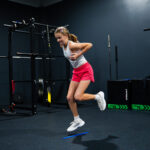Sports Specific Training for Youth Athletes
Today’s youth athletes face more competition than ever. To excel, they need more than just general fitness. They need sports specific training tailored to their age, growth stage, and sport.
This type of training helps young athletes build strength, speed, coordination, and confidence—without risking injury.
Why Sports Specific Training Matters for Youth
Children are not mini adults. Their bodies, bones, and brains are still developing. That’s why their training must be safe, skill-focused, and fun.
Sports specific training gives youth athletes:
-
A solid movement foundation
-
Injury-resistant strength
-
Better sport technique
-
Faster reaction times
-
Improved confidence and discipline
Done right, it boosts performance while keeping them healthy and motivated.
Common Mistakes in Youth Training
Before jumping into a training plan, it’s important to know what to avoid:
-
Avoid early specialization: Focusing on one sport too soon can cause burnout and overuse injuries.
-
Avoid adult-style workouts: Heavy lifting or excessive conditioning can harm growing bodies.
-
Avoid poor form: Without coaching, bad habits develop fast and can lead to injury.
Instead, prioritize fun, movement variety, and gradual progress.
Key Components of Youth Sports Specific Training
1. Fundamental Movement Skills
These include jumping, running, skipping, and throwing. They are the building blocks for all sports.
2. Coordination and Balance
Drills that challenge balance help develop better control and stability.
3. Speed and Agility
Short sprints, change-of-direction drills, and reaction games build fast feet and body control.
4. Age-Appropriate Strength
Bodyweight movements, resistance bands, and light weights help build foundational strength.
5. Sport-Specific Drills
Training should mimic the movement patterns of the athlete’s sport—e.g., shooting form for basketball or passing technique for soccer.
Sample Weekly Training Plan for Youth Athletes
| Day | Focus |
|---|---|
| Monday | Fundamental movement + speed drills |
| Tuesday | Coordination + sport skill work |
| Wednesday | Rest or light activity (e.g., biking) |
| Thursday | Strength training + reaction games |
| Friday | Endurance + sport-specific drills |
| Saturday | Game or active recovery |
| Sunday | Rest |
5 Youth-Friendly Sports Specific Drills
Cone Hop and Sprint
Purpose: Build power and acceleration
How to do it: Hop over 3 cones, then sprint 10 yards. Repeat 5 times.
Mirror Drill
Purpose: Train reaction and agility
How to do it: Pair up. One leads with side steps, the other mirrors movements. 4 rounds of 20 seconds.
Plank Shoulder Taps
Purpose: Strengthen core and shoulders
How to do it: From a plank, tap one shoulder with opposite hand. Keep hips still. 3 sets of 10 taps per side.
Ball Drops
Purpose: Train reaction speed
How to do it: A coach drops a tennis ball. Athlete sprints to catch it before second bounce. Do 6–8 reps.
Balance Beam Walks
Purpose: Improve balance and body control
How to do it: Walk slowly across a balance beam or line. Add backward walking as skill improves.
Injury Prevention for Youth Athletes
Youth athletes are at risk for growth-plate injuries, overuse syndromes, and sprains. Good training can help prevent this by:
-
Teaching proper technique early
-
Focusing on flexibility and mobility
-
Strengthening muscles around joints
-
Avoiding overtraining and fatigue
According to the NSCA youth guidelines, supervised, progressive resistance training is both safe and beneficial when done correctly.
Coaching Tips for Parents and Trainers
-
Make it fun! Kids are more likely to stick with a program that keeps them engaged.
-
Keep cues simple: “knees out,” “chest up,” “fast feet.”
-
Focus on form, not weight or reps.
-
Use games to teach agility and reaction time.
-
Offer praise to build confidence and motivation.
Why Train at Next Level Athletics?
At Next Level Athletics, youth training is done right. Their certified coaches:
-
Use age-appropriate methods
-
Focus on movement quality and fun
-
Build well-rounded athleticism
-
Help youth transition into teen and elite-level training
Whether your child plays soccer, baseball, basketball, or any sport in between, Next Level offers customized programs that grow with them.
The Long-Term Benefits of Smart Training
Starting with sports specific training at a young age pays off in the long run. Youth athletes who train well:
-
Build a strong, healthy base for future competition
-
Are more resistant to injury
-
Learn discipline and goal-setting
-
Stay active and engaged
-
Are better prepared for high school and college sports
It’s not just about winning today—it’s about developing athletes for life.
Conclusion: Train Safe, Train Smart, Have Fun
Youth athletes are full of potential. The right training unlocks that potential in a safe and positive way.
Sports specific training helps kids get faster, stronger, and more skilled—while still having fun and avoiding injury.
With the right support, youth athletes can thrive on the field, court, or track—and carry that success into every part of life.


Recent Comments